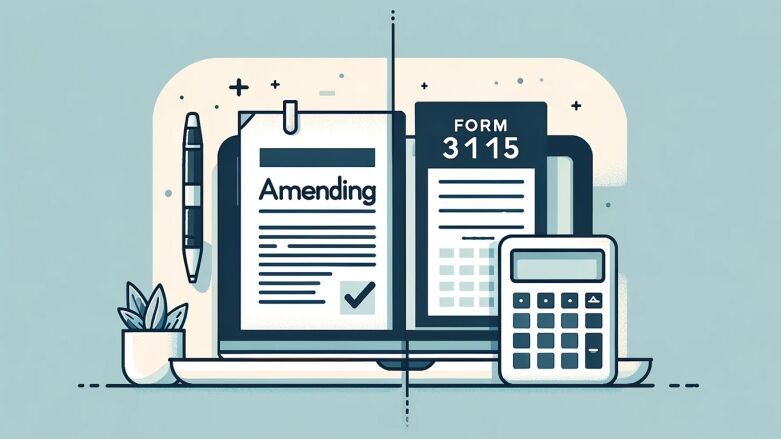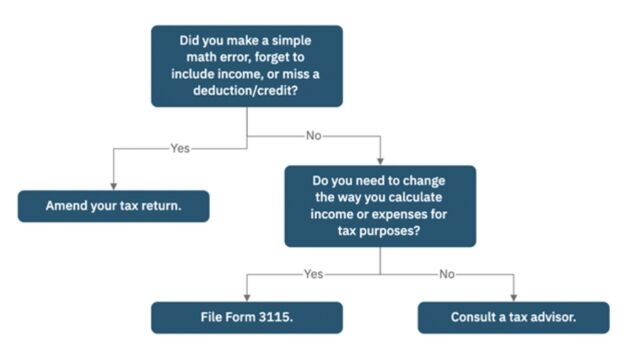
Even the most diligent taxpayers can make mistakes when filing their tax returns. Maybe you missed some income, forgot a deduction or depreciated an asset improperly. The good news is that the IRS gives you ways to fix these types of errors.
Two primary tools exist for making corrections: amending your tax return and filing a Form 3115. Let's take a closer look at each method and when it's appropriate to use them.

Amending a Tax Return: The Basics
An amended tax return is simply a revised version of a tax return you've already filed. When you file an amended return, you’re letting the IRS know that you made a mistake and requesting they fix it.
There are several reasons why you might need to amend a tax return, including:
To amend your federal tax return, you'll use Form 1040-X. You'll need to provide the IRS with clear explanations of why you're making the changes. Be aware of time limits. Generally, you have three years from the date you filed your original return or two years from the date you paid the tax, whichever is later, to submit an amended return.
Form 3115 is a specialized IRS form used to request permission to change an accounting method. Accounting methods are the rules that dictate how your business reports income and expenses for tax purposes. They cover everything from calculating depreciation to when you recognize revenue.
There are two main reasons why you might need to use Form 3115. The first scenario involves correcting a mistake on your previous tax returns. If you discover that an incorrect accounting method was used, Form 3115 allows you to request permission from the IRS to fix the error and ensure your taxes are reported accurately.
The second scenario involves switching to a new accounting method. Perhaps you find a different method that better reflects your business's financial activities or offers a potential tax advantage. Because any change in accounting methods requires approval from the IRS, you can request this change in method through Form 3115.
Here are some examples of changes that might require you to file a Form 3115:

Now that you understand the basics of amended returns vs. Form 3115, how can you decide which path to take? Here's a simple guideline: If you've missed income, deductions or credits, or made basic calculation errors, the solution is to amend your tax return. If you need to switch accounting methods or correct an error in how you've been applying a method, then Form 3115 is the way to go.
Complexity is another factor to consider. Amending tax returns is relatively straightforward. Most taxpayers can complete a Form 1040-X on their own or with the help of tax preparation software. Form 3115, however, is considerably more complex. The rules surrounding accounting methods can be very complicated. It’s wise to consult a tax professional when navigating this process.
In a previous blog post, we discussed how to use Form 3115 to claim bonus depreciation. This Form can also be used to apply cost segregation retroactively, which could save you hundreds of thousands on taxes. Although filing a request for a change in accounting method can be complex, it may be key for accelerating your cashflow.
Interested in learning more about how you can leverage real estate investments to reduce your tax burden? Contact Engineered Tax Services today for a free benefit analysis!